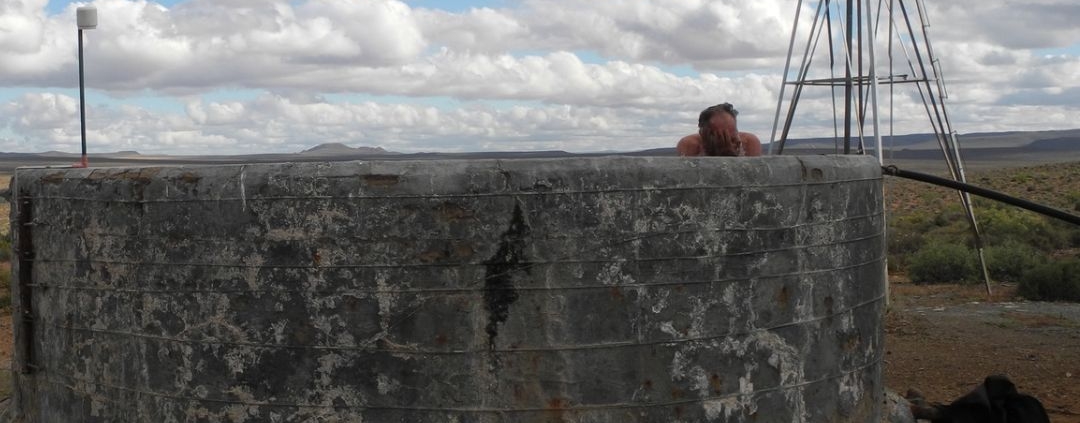From the Archives: Newsletter January 2007
January 2007
Dear Customer
All our newsletters seem to start with the weather, and this one is no exception! As gardeners, the weather is of great importance to us all as it determines what we can and cannot grow, and rain, either too much or not enough, is foremost in our minds. At the end of the last wet season in the SW Cape, we heard from a number of people how wet it had been. However, after talking to farmers throughout the winter rainfall area, it appears that for most places the rainfall was actually about average – I think that we have had so many dry years that we have forgotten what “average” rain is like! The distribution throughout the season was good, resulting in excellent flower displays, and our only criticism is that the rain stopped early – in early September instead of in October. Some areas, however, did receive far more than their average rain – the southern Cape and further east along the coast had major floods, and Namaqualand and the Karoo had about 3 to 5 times their normal quota.
We are now well into our hot dry season, although we have had some unexpected showers of rain. Looking out of the window a few minutes ago, we saw a helicopter flying past with it’s fire bucket hanging underneath, so it seems as though the fires have now begun.
At the end of August the Indigenous Bulb Society held a Symposium in Worcester, about 100km from Cape Town, and almost 100 delegates from all over the world attended. The bulb displays on our field trips were spectacular (a far cry from the last Symposium 2 years ago!) and everyone took far more photos than expected! Thank goodness for digital cameras! We visited Middelpos (in the Karoo) immediately after the Symposium with 38 delegates, at the height of the bulb flowering time. This sadly taxed the resources of the Middelpos Hotel which only has accommodation for 18 people! They solved the problem by packing some of the town inhabitants off to Sutherland for 3 days, thereby vacating their houses for us, and other delegates stayed in the Clinic and school hostel! Middelpos normally receives about 125mm (5 inches) of rain each year, but this winter they received 375mm (15 inches), resulting in the best flower displays in living memory. The displays of Romuleas were particularly impressive, and we saw fields of the most spectacular Romulea unifola, a species that we normally struggle to find at all. We also saw all the old favourites: Tritonias, Bulbinellas, Daubenyas, Ixias, Geissorhizas, Babianas, Lachenalias, and of course sheets of annuals such as Felicias, Dimorphothecas, Senecios and Zaluzianskyas. We went back to the area a month later, and found fields of the rare Gladiolus marlothii, Ixia thomasiae and various other October flowering species, including some unusual species.
We are now waiting with interest to see what effect this rain will have had on the autumn flowering Amaryllids. In March 2006 they did not really flower at all throughout the winter rainfall area, despite good early rains in March and April. The more we see of these plants, the more we realise how little we know of their life cycles and what makes them flower.
Our collecting year in 2006 was as busy and as rushed as usual with trips to the Eastern Cape, Mpumalanga, Venda and the Drakensberg, plus Namibia and Botswana. When we tell people that we are off on a field trip, they always look at us knowingly and they seem to think that we are off on holiday, or a jaunt to enjoy ourselves! Well, yes we do enjoy ourselves, but field trips involve lots of hard work. We work from sunrise to sunset, in all weathers from freezing to over 40°C, in rain and sun. Our evenings are usually spent cleaning seed, treating it with insecticide, ensuring that all the collecting details and plant names are correctly recorded, and packing it all away in the car. Often slightly green seed may have to be ripened in water, and these jars are inspected every day for ripe capsules. And of course if the seed was collected wet, it all needs to be dried out before being packed. Our last couple of trips have been fiercely hot with temperatures in the low 40°Cs. On these trips we spend as much time looking for farm water reservoirs as we do for seeds! We stop the car, leap over the fence and strip off our clothes in a trice, and a few seconds later we are in the water! What a relief. Seed collecting under these conditions requires caution – everything is so dry and brittle that if you accidentally touch the seed spike or capsule, the seed flies off in all directions. The opposite applies when it is wet. Then the plants are reluctant to let go of their seed, the capsules rehydrate and it becomes impossible to tell whether they contain seed or not. If the seed is very fine and dust-like, one cannot collect it at all as it just sticks to everything.
Despite the sometimes indifferent weather and the days of fairly boring driving, yes we do enjoy the field trips. Particularly on those occasions when the weather is perfect and one comes round a corner and there is a plant you have dreamed off, just dripping with ripe seed!
We DID go on holiday this year – we spent 3 weeks walking on the Canary Islands, off the coast of Morocco, and we didn’t collect one seed! We spent most of our time on La Palma where the walking is either very up or very down, but wonderful. The islands are volcanic so the scenery and the plants are fascinating. We also spent a few days on Lanzarote and on Tenerife where we climbed El Teide at 3720m. The volcanic cone was snow covered on the day we climbed it, and this contrasts greatly with the smoke and sulphur fumes that pour out. It took us about 6 hours to walk up, and 4 minutes to get down in the cable car!
Frontier’s new plant house at Brackenfell is now fully operational and is at present full of flowering Streptocarpus and Zantedeschia hybrids in all colours. Rod and Andy spent a couple of Saturday mornings at the local craft market selling potted Zantedeschias in full flower, as Christmas presents.
Happy Planting
Rod &Rachel Saunders



